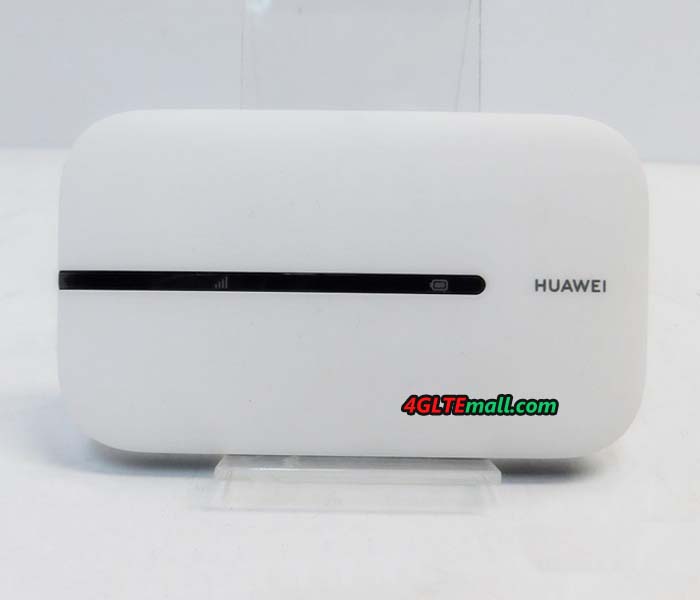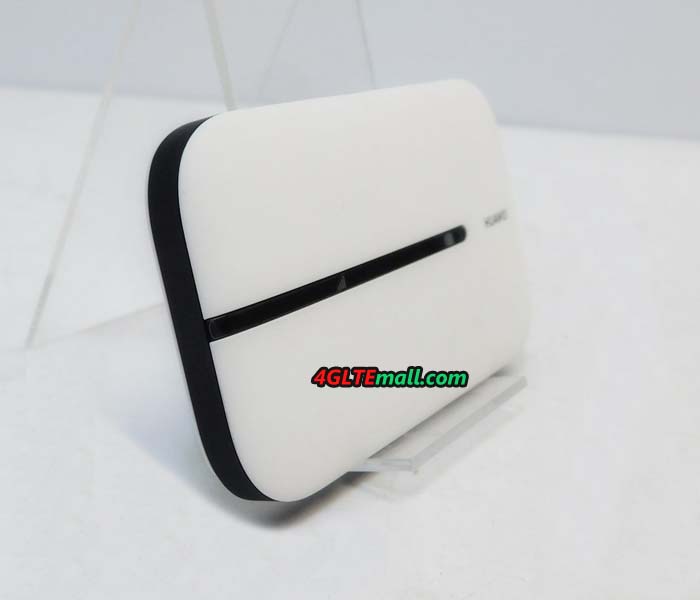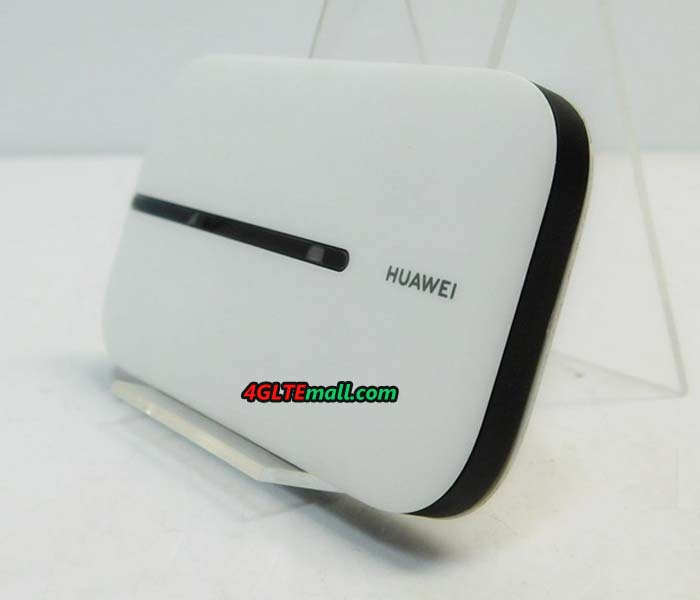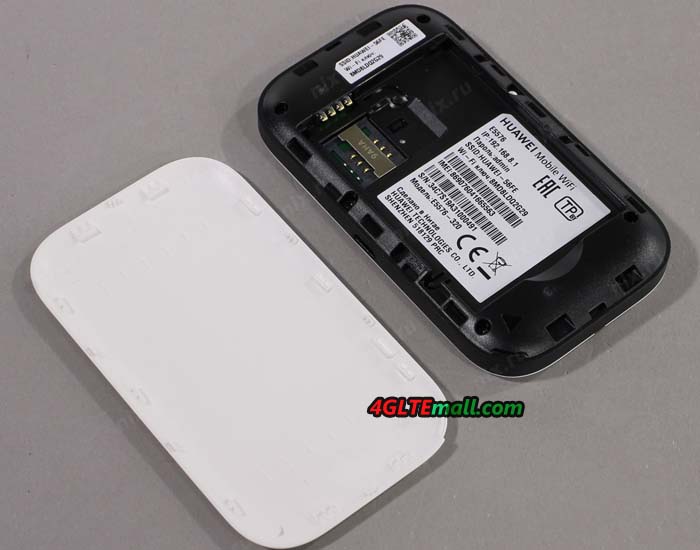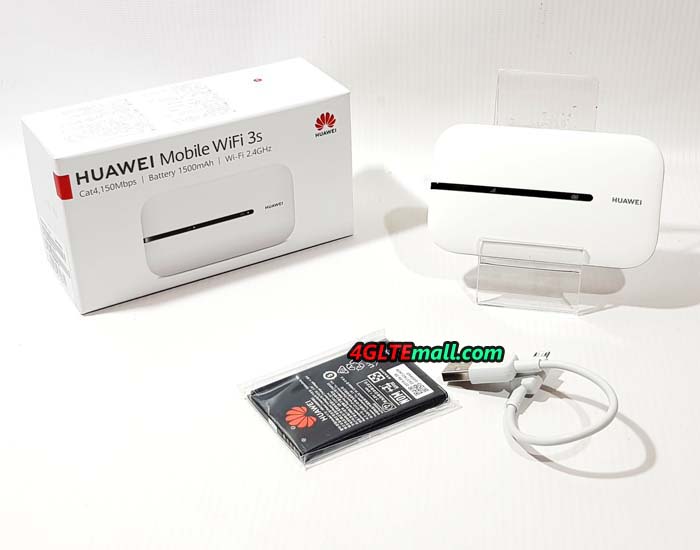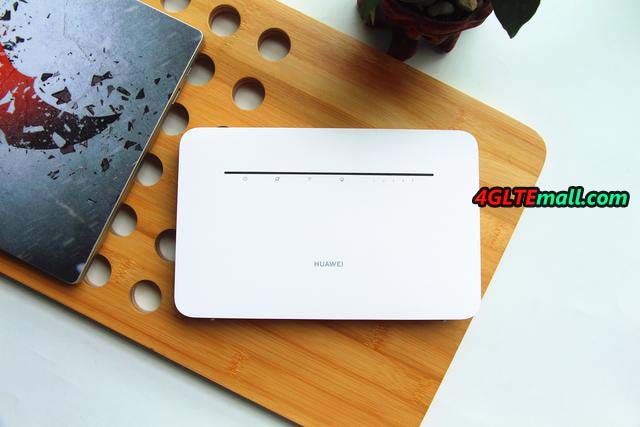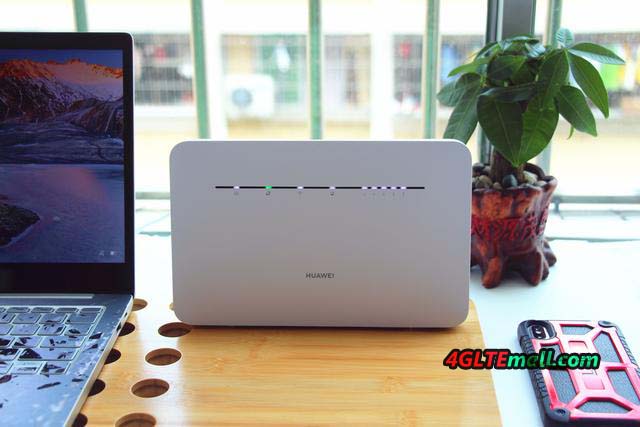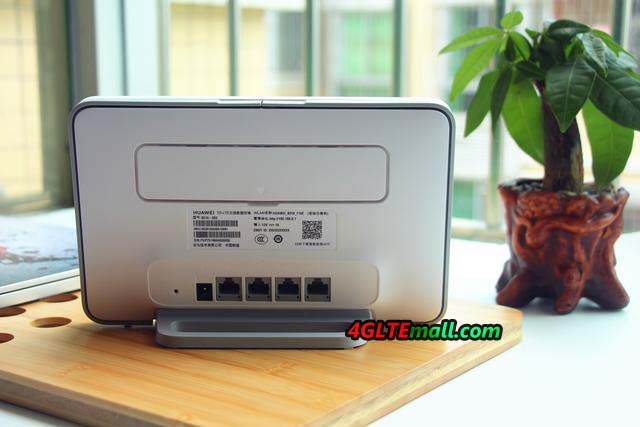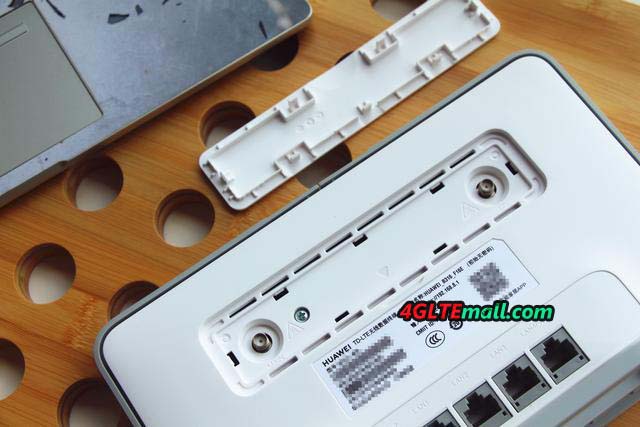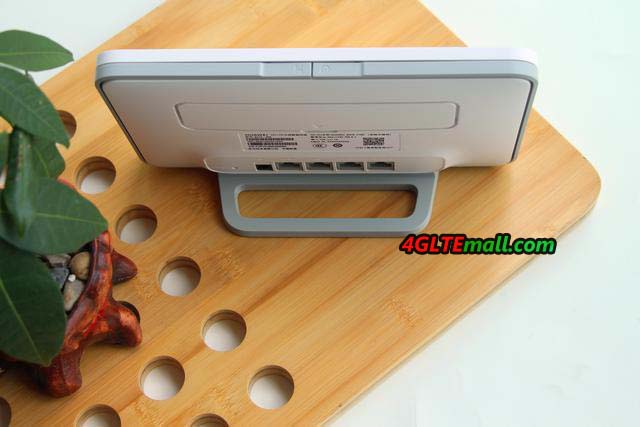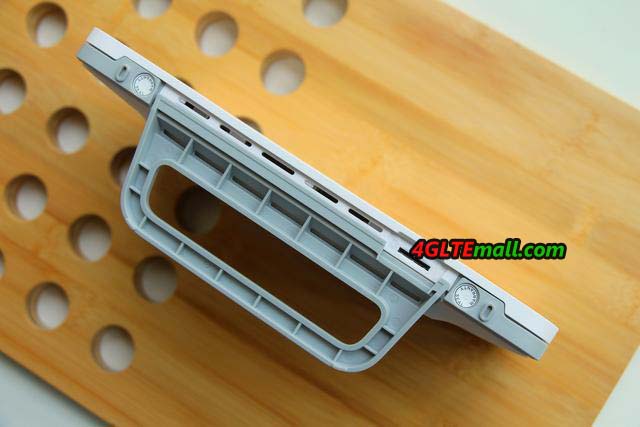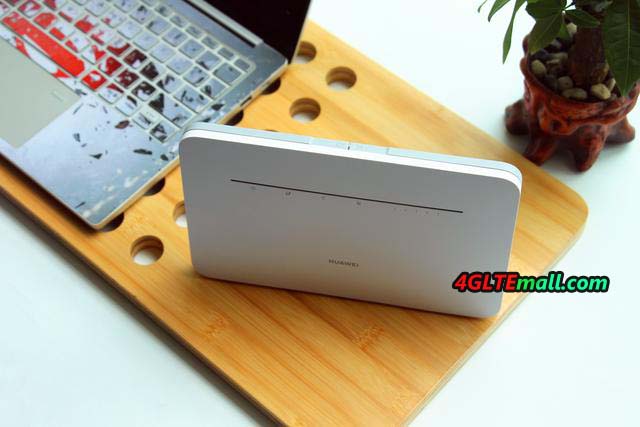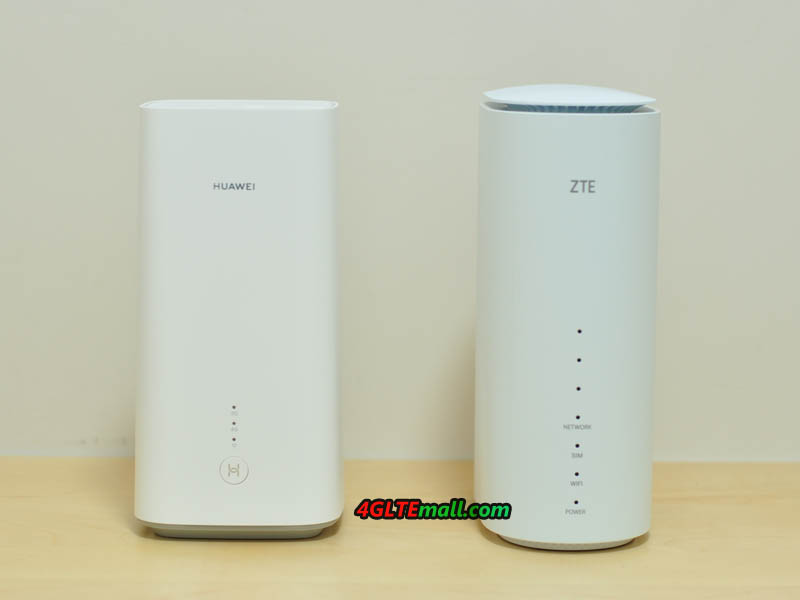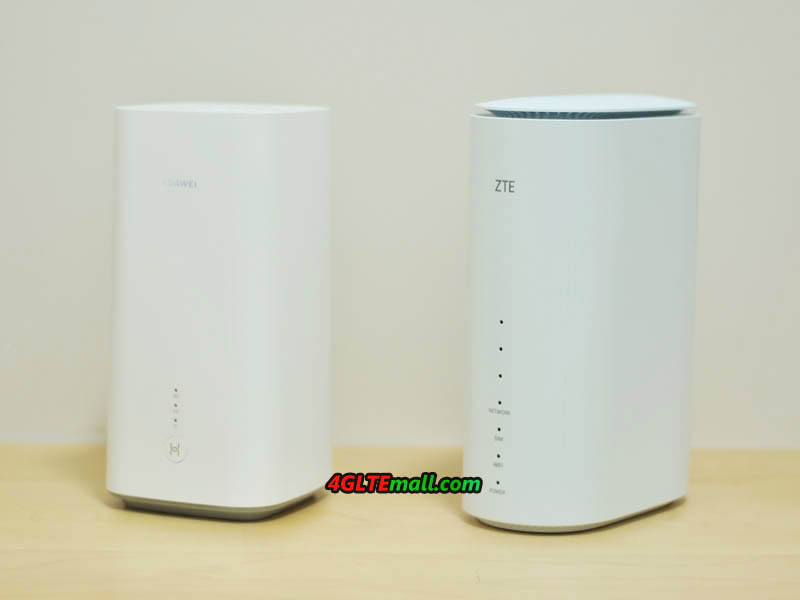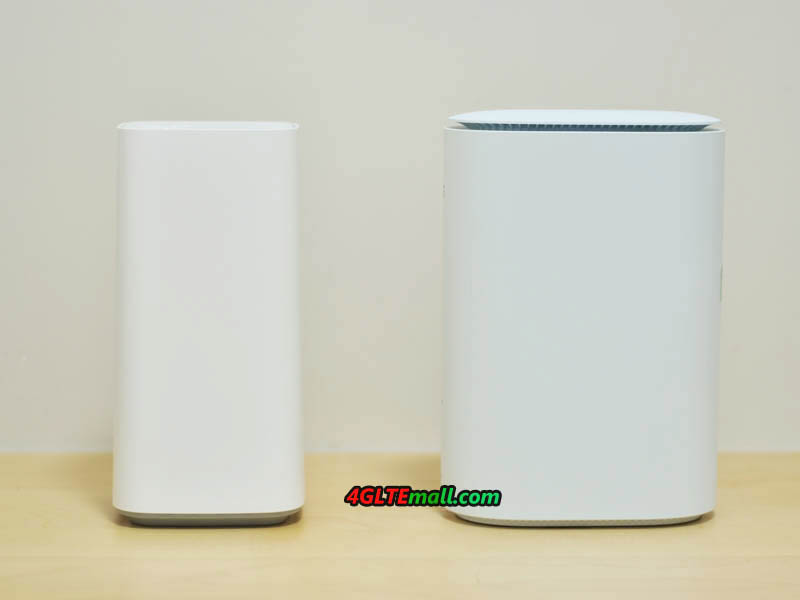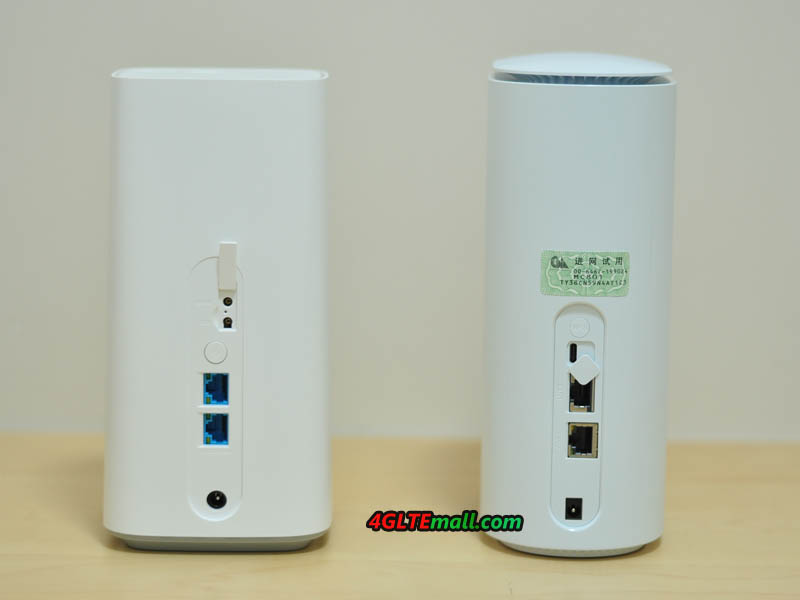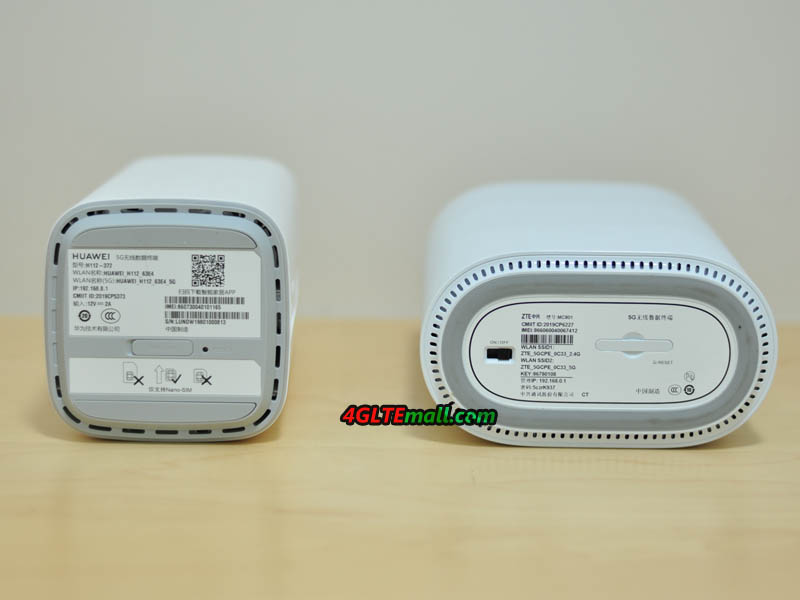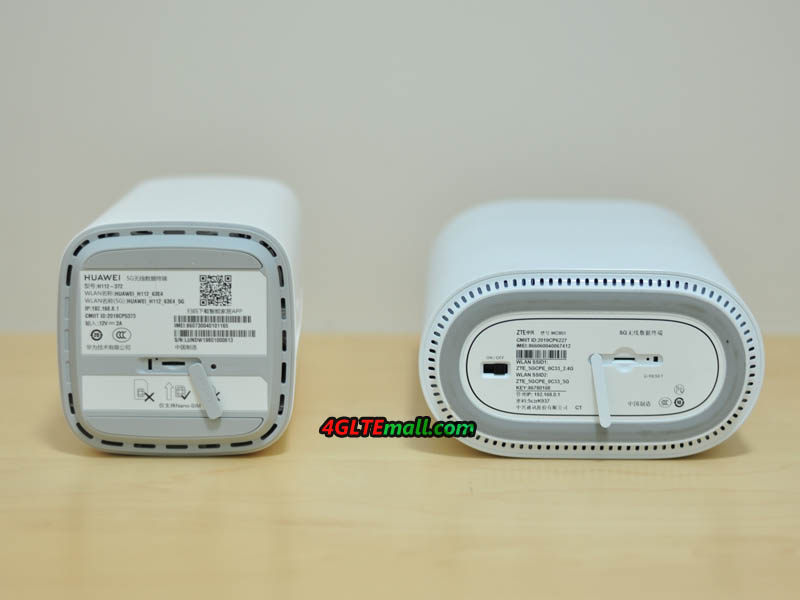未選択
-
Huawei E5576 Mobile WiFi 3s Test
The Huawei Mobile WiFi 3s has recently become a very affordable mobile LTE router in European countries. The Huawei MiFi 3S, which is also marketed under the model name Huawei E5576-320, can be used with all SIM cards.
Of course, you shouldn't expect high-end equipment at the very reasonable price. For example, there is no display on the front - this is often standard for more expensive 4G LTE hotspots. For this, the Huawei E5576 is very small and handy and can be perfectly carried in your pocket or in your backpack.
The Huawei E5576 is made entirely of plastic and available in black and white. In addition to the device itself, the scope of delivery also includes an approximately ten centimeter long USB to micro-USB cable, a 1,500 mAh battery, a quick start guide and a warranty card. There is no need for a power pack to charge the battery, but you can use any existing USB power pack.
Good first impression
The Huawei E5576 Mobile WiFi 3s hotspot makes a good first impression. The material used feels good and the button for switching on and off on the top has a good pressure point. The back can be easily removed to insert the SIM card (Mini-SIM format, 2FF) and the battery.
At first glance, it is negative that Huawei has not installed any connections for an external cellular antenna and continues to rely on the micro USB standard. USB Type C would have been appropriate here in 2020.
Unlimited SIM cards from Telekom and O2 were used for the test. Unfortunately, the performance in the LTE network via WLAN was very poor. Tested with several end devices, the speed rarely exceeded 20 Mbit/s. In the peak, about 23 Mbit/s in the downlink and about 33 Mbit/s in the uplink could be reached via WLAN.
LTE Modem In the Test
The speeds were significantly better when the Huawei E5576 was connected via USB. Well over 100 Mbit/s in the downlink and almost 50 Mbit/s in the uplink were possible. These measurement results show that the modem can deliver high speeds, but the bottleneck is to be found in the weak WLAN module. In comparison with an expensive high-end LTE hotspot such as the Huawei E5788 and Netgear Nighthawk M2, it also shows that the LTE network can do much more than the small Huawei E5576 gets out of the connection.
The minimum latency (ping) was always well below 20 milliseconds - the small Huawei E5576 hotspot is in no way inferior to much more expensive end devices.
The Huawei E5576 can be used in almost every UMTS and LTE network in Europe, since all important frequency ranges are supported. Incidentally, the modem is not capable of 2G / GSM, which, given the now very good LTE networks, is no longer tragic. The following frequency ranges are supported in detail:
- 4G / LTE: B1, B3, B7, B8, B20, B28
- 3G / UMTS: B1, B8
On other continents such as Asia, North America or South America, you have to be prepared for the fact that many LTE networks cannot be used or can only be used to a very limited extent. The Huawei E5576 does not support the frequency bands required for this.
WLAN in the test
The WLAN module of the Huawei E5576 Mobile WiFi 3s works exclusively in the frequency range around 2.4 GHz and can supply up to 16 devices with a WLAN connection at the same time. The WLAN name and password can of course be assigned individually.
Unfortunately, the WLAN module did not do well in the test. The connection was always stable, but as described in the LTE modem test, it was relatively slow. Often, only 73 Mbit/s gross data rate was displayed on the MacBook. The speed is sufficient for normal surfing and video streaming, but the maximum LTE speed of 150 Mbit/s cannot be reached via WLAN. The range was also quite short, there shouldn't be more than one wall between the Huawei E5576 and the end device.
For example, the channel bandwidth can be set via the advanced WLAN settings. There is also the option of setting up an automatic standby mode for the WLAN network when no devices are connected. This helps to save energy.
It is easy to set up a second SSID (guest access). The name, the password and the desired duration for the guest access can be set individually. Huawei offers the options unlimited, 1 day and 4 hours for the duration of guest access.
The WiFi extender is a very interesting function. This means that you can use a different WiFi network than Internet access, for example in a hotel, at a campsite or on the train. This helps to save mobile data volume. There is no noticeable difference for the devices connected to the Huawei E5576, because the WLAN network of the E5576 will of course remain as usual. The WLAN extender is configured either via the web interface or via an app.
Operation and software
The Huawei E5576-320 LTE router can be operated either via the Huawei Smart Home app (for Android and iOS) or via the browser web interface. Right from the first setup, the software offers to change the WiFi password and admin password. Huawei has noted the standard WLAN password both under the battery cover and in the battery compartment.
Since there is no display for operation directly on the device, you have to rely on the corresponding LEDs on the front. These shine in different colors depending on the condition of the battery or depending on the reception and are easy to read. Green LEDs indicate good condition, yellow LEDs indicate poor reception or a weak battery.
Both the web interface and the Huawei Smart Home app offer an attractive, functional design and are easy to use. The web interface can be called up with a device connected to the router via the IP address 192.168.8.1 in the browser. If you use the app, you do not need to enter the IP address. The app is sufficient for most settings, only a few menu items can only be accessed via the web interface, such as the 3G-only mode.
The software of the Huawei mobile WiFi router can be updated via the web interface. If an update is available, the router automatically reports via the web interface.
Battery for up to 6 hours of operation
The battery has a capacity of 1,500 mAh and can be changed by the user without any problems - quite a special feature in today's world. The operating time is specified by Huawei as about 6 hours, this value was confirmed in the test. Depending on the number of connected devices, the operating time may decrease somewhat, but if necessary you can simply buy a replacement battery and thus extend the runtime.
Charging the battery takes about an hour in the test. Operation without an inserted battery, i.e. only via USB power supply, was not possible in the test. The two LEDs flashed red.
Conclusion: good and cheap
The Huawei E5576 Mobile WiFi 3s is one of the cheapest mobile LTE routers. At the cheap price you get a reasonable performance. The well-designed software and simple operation were particularly convincing. The compact design and the removable battery are also positive.
You have to cut back on the weak WLAN performance and the comparatively slow LTE modem. You also have to do without comfort functions such as a display, connections for an external antenna or a memory card. If you don't mind, the Huawei E5576 Mobile WiFi 3s is an LTE hotspot with a good price-performance ratio, which is suitable for normal surfing, checking e-mails and also for occasional video streaming.
PR -
Huawei 4G Router 3 Pro B535 Test
The new router Huawei 4G Router 3 Pro (Huawei B535-232) was available in European countries for a few months, which is integrated LTE Cat7 modem and allows speeds of up to 300 Mbit/s in the downlink. As we introducted before, Huawei B535 router has many predecessor such as the Huawei B618 or the Huawei B818, which can provide much faster link speeds, but they also cost a lot more expensive than Huawei B535.
Like other Huawei 4G WiFi routers, the Huawei B535 LTE router is packed in a simple cardboard box. In addition to the router with the model number B535-232, you will also find a power supply unit (output: 12V, 1A) and a stand dock. A multilingual quick start guide and a warranty card are also included.
If you already had a few LTE routers in hand, the first thing you notice about the Huawei B535 is the comparatively flat design. The body of Huawei 4G Router 3 Pro is made of gray and white plasti and visually unobtrusive. Various LEDs are located on the front, which indicate the operating status. For example, the reception strength is signaled using five bars. There are also LEDs for power, internet, WLAN and LAN.
There are two buttons for power and WPS on the top. These have a clear pressure point. All connections are on the back of the Huawei B535 4G Router 3 Pro. There are four Gigabit LAN connections, a connection for the power supply, a reset button and two SMA connections under one cover for an external cellular antenna. The Huawei B535 does not offer support for USB devices or telephone.
Huawei 4G Router 3 Pro Specifications
In theory, the modem of the Huawei B535 LTE router can reach speeds of up to 300 Mbit/s in the downlink and up to 100 Mbit/s in the uplink (LTE Cat7). Almost all frequency bands important for Europe are supported, as the following list shows. Only the band 32 (1,500 MHz) cannot be used by the router, but there are no restrictions. Huawei does not provide any information about the possible CA combinations.
- 4G/LTE Band: B1, B3, B7, B8, B20, B28
- 3G / UMTS: B1, B8
2G GSM network is not supported. In view of the now very good LTE network expansion, this is surely not be a good problem for most users.
In terms of LTE speeds, the Huawei B535 was able to convince in the test. Although the device was tested in the test with unlimited SIM cards from Vodafone, it was far from the theoretical maximum, but with well over 150 Mbit/s in the downlink and up to 70 Mbit/s in the uplink, you can do a good life. We also take a comparison test with the Netgear Nighthawk M2 Router and it shows that the network theoretically enables even higher speeds.
The latency was usually well below 30 milliseconds, and the peak was even less than 20 milliseconds. The reception and transmission power was very good in the test (LTE B3, B7, B20).
The Huawei B535 4G Router 3 Pro also offers the option of connecting an external cellular antenna. The effect of a 4G LTE outdoor antenna was not tested separately in the test. If the external antenna is not automatically recognized, you can manually switch to the external antenna in the web interface.
Fast dual band WiFi
So that the maximum LTE speed also reaches the connected end devices, a fast WLAN module is of course required. The Huawei B535 supports WLAN ac at 2.4 GHz with up to 300 Mbit/s and at 5 GHz with up to 867 Mbit/s. In the test, the 867 Mbit/s could also be reached up to 5 meters by line of sight.
As soon as a wall came between the router and the end device, the data rate dropped noticeably. Fast surfing and video streaming was also about 10 meters away from the router and was still possible without problems after two walls. The Wi-Fi range of the Huawei B535 was convincing in the test!
The Huawei B535 can simultaneously supply a maximum of 64 end devices with a WLAN connection. The WLAN name can be set separately for 2.4 GHz and 5 GHz, so as the password. There is also the option of setting up a guest WLAN. The guest WLAN can either run indefinitely or be automatically switched off after one or four hours.
The Huawei B535 does not have a WLAN extender function, i.e. the use of an existing WLAN as Internet access. There is also no WLAN timer.
Gigabit LAN and WAN function
The four RJ45 Gigabit Ethernet LAN connections on the back allow the connection of devices such as computers, televisions or games consoles via cable. The connections worked smoothly in the test.
If desired, the LAN 4 connection can also be used as a WAN connection. This means that the internal cellular modem is switched off and the Internet connection is processed via an existing LAN connection. Of course, this is particularly useful if you only occasionally use the Huawei B535 as an LTE router. For the rest of the time, the device then functions as a normal WLAN access point.
Software and operation
To set up and configure the Huawei B535 4G Router 3 Pro, you can either use the Huawei Smart Home app (available for Android and iOS) or the browser web interface. Both the app and the web interface have a modern, functional and clearly structured design and are easy to use.
In addition to the usual settings for WLAN and network, which were mentioned in the test, there are also some more special functions. These include, for example, the VPN function, the bridge mode and the dynamic DNS function. There is also the option of filtering IP addresses or domains.
In addition to an SMS function, there is also a statistics function with which the data volume used and online time can be checked. There is also an easy-to-use parental control function, which can limit the usage time (separated by days and times) for individual devices, for example.
Unfortunately, neither the app nor the web interface offer the option of displaying detailed information about the Internet connection, such as the frequency band used, the antenna technology used or the CA status. There are also no such settings, for example to set the router to a specific frequency band. The LTE router models from AVM, for example the FRITZ! Box 6820 LTE offers significantly better equipment in this area. After all, there is the possibility to use "only 3G" or "only 4G". The Huawei B535 does not support GSM / 2G anyway.
Test conclusion: good performance at a low price
The Huawei B535-232 4G Router 3 Pro left a very good impression in the test. The design of hardware and software is simple and functional, operation via app and web interface is simple and well thought out. In places, however, more information and setting options would be desirable.
The connection speeds via LTE and WLAN are good, and the many RJ45 Ethernet LAN connections are commendable. You have to do without a telephone system and a USB connection, but Huawei has installed connections for an external 4G LTE antenna. If you can live with the few functions described, the Huawei B535 is a very good LTE router at a fair price.
-
HUAWEI 5G CPE Win Announced for China
Huawei Technologies of China announced a new 5G NR & LTE terminal "HUAWEI 5G CPE Win (H312-371)" for China. This is customer premises equipment (CPE) for outdoor use that supports the NR system of the fifth generation mobile communication system (5G). The communication modem is equipped with HiSilicon Balong 5000.
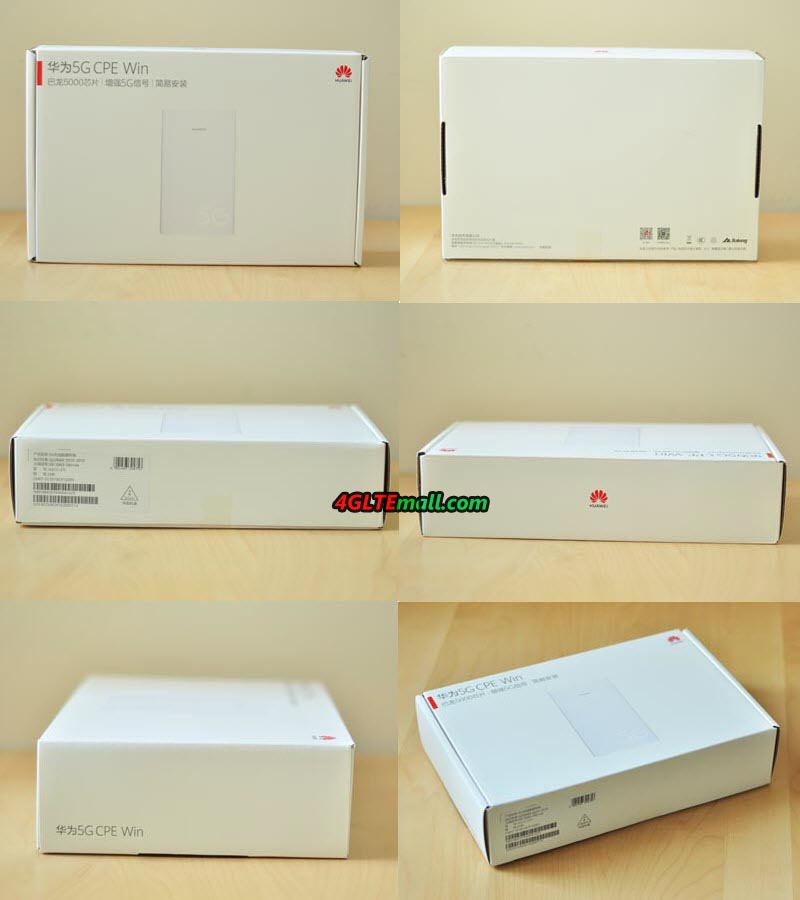
The new Huawei 5G outdoor CPE not only supports 5G networks, but also 4G LTE networks are backward supported. Below are the supported 5G NR and LTE frequency bands: * 5G NR Frequency Band(TDD) 4500 (n79)/3700 (n77)/3500 (n78)/2500 (n41) MHz * 4G LTE (FDD) 2600 (B7) / 2100 (B1) / 1800 (B3) / 1500 (B32 ) / 900 (B8) / 850 (B5) / 800 (B18 / B19 / B20) / 700 (B28) MHz, LTE (TDD) 3700 (B43) / 3500 (B42) / 2600 (B38) / 2500 (B41) / 2300 (B40) / 2000 (B34) / 1900 (B39) MHz. The 5G NR method can use a stand-alone (SA) configuration and a non-stand-alone (NSA) configuration. Here now there is only one color variation available: white.
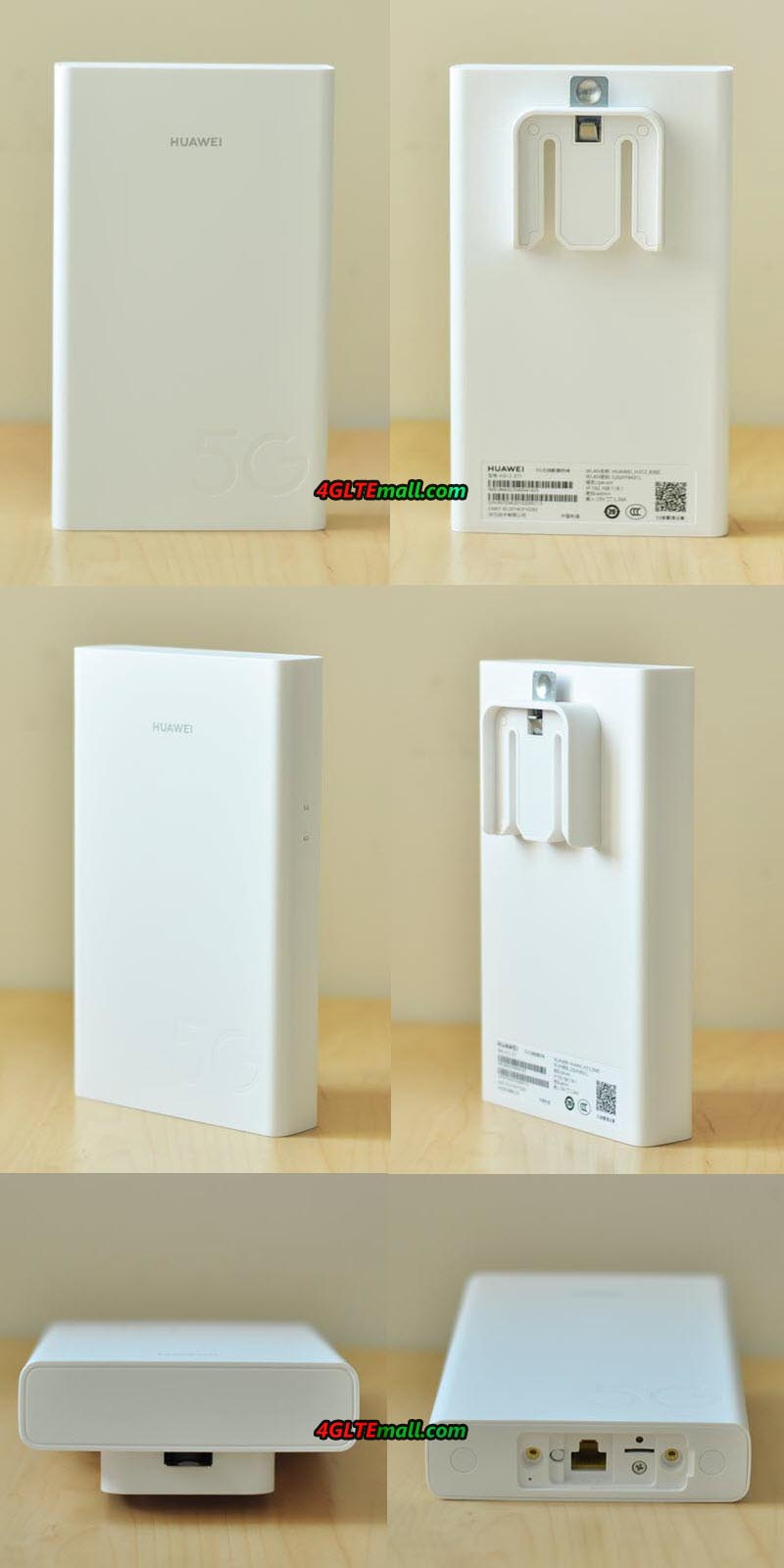
Similar to the predecessor Huawei 5G CPE Pro(indoor 5G CPE), the Huawei 5G CPE Win can achieve communication data speed up to 1.65 Gbps for downlink and 250 Mbps for uplink in the NR networks, and 1.6 Gbps for downlink and 150 Mbps for uplink in the LTE networks. Huawei 5G CPE Win can use a single SIM and the size type is Nano SIM (4FF) size. As a 5G Outdoor WiFi Router, it is equipped with waterproof and dustproof performance compliant with IP65. And it also supports wireless LAN (2.4GHz / 5GHz).
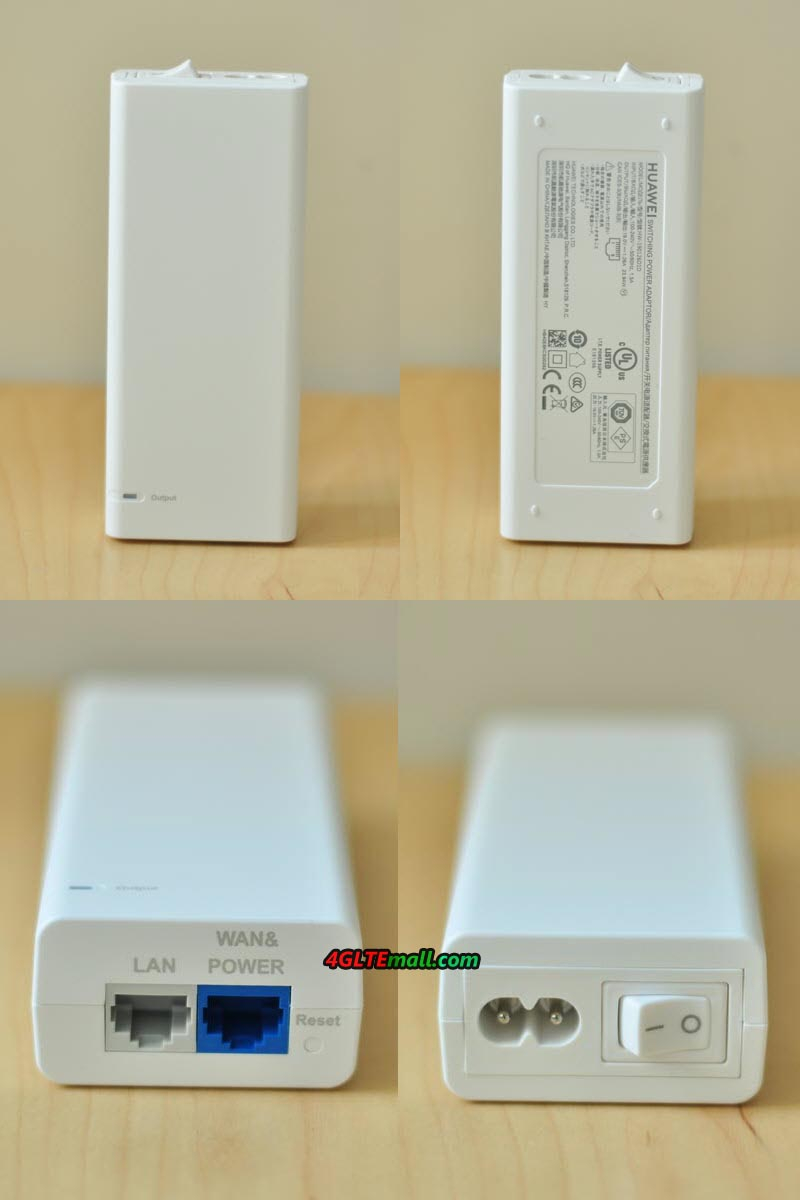
The signal strength may be weak indoors, but since it is installed outdoors, it can be used in areas with weak signal strength. HUAWEI 5G CPE Win installed outdoors and HUAWEI WiFi Q2 Pro installed indoors can be used by wired connection.
The Huawei 5G CPE Win user guide states that installation work can be carried out in about 30 minutes. The storage temperature of the Huawei 5G router is -40 to 70 degrees, and operating temperature without solar radiation is -40 to 55 degrees, and operating humidity is 5% to 95%. If you are interested in this new 5G outdoor router, welcome to check www.4gltemall.com . -
ZTE MC801 VS Huawei 5G CPE Pro
As the first 5G WiFi router, Huawei 5G CPE Pro is now being well-known by many customers worldwide and it has been available for a few months. As the competitor to Huawei, ZTE is also one of the important 5G vendors in the world and its new 5G router ZTE MC801 is available recently. For many users, they wonder which one is better between ZTE MC801 and Huawei 5G CPE Pro? And what’s the difference between Huawei 5G CPE Pro and ZTE MC801? Today, we will compare the two 5G wireless routers to provide some clue for the advantage and disadvantage from the two Chinese 5G vendors.
ZTE MC801 VS Huawei 5G CPE Pro Appearance DifferenceFrom the ZTE MC801 review and Huawei 5G CPE Pro review, you may get some knowledge about the two routers. They both have cool and modern design. Below the images will show the design difference. The Huawei 5G CPE Pro looks similar to its predecessor model Huawei B618 4G Router. ZTE MC801 Router adopts the runway-type streamline design, which won iF Design Award 2019. The design looks really cool.On front of the routers, they both have some LED indicators to show the connection status. Huawei 5G CPE Pro show the 5G, 4G and WiFi status with a button for Hilink while ZTE 5G Router MC801 shows the status of Network, WiFi, SIM, and Power. On the back, the Huawei 5G CPE Pro (H112-372) has two LAN ports(one also for WAN), one power button, two connectors for external antenna. The ZTE 5G CPE has two LAN ports, one USB Type C port and one WPS button. Unlike the Huawei 5G CPE Pro and the predecessor models such as ZTE MF275R, there is no connector for external antenna. So if you are located at somewhere with weak signal, ZTE MC801 may not be a good option because it can’t provide the possibility to connect external 4G or 5G antennas.The two 5G WiFi CPEs both use NANO SIM cards. And the SIM card slots are located at the bottom of the router with the reset button. At the side of the SIM Card slot, the model number, IMEI number, WLAN name/SSID, WiFi key and IP log in address are listed. The difference is that ZTE MC801 tells the two WLAN SSID names for 2.4GHz and 5GHz, and ZTE MC801 tells the IP log in password (not admin as 4G WiFi routers). Huawei 5G CPE Pro don’t tell the IP log in password because it will be same as the WiFi connection password, which needs to be set up by the users. At the beginning, the WLAN network of the Huawei 5G CPE is open.
Huawei 5G CPE Pro VS ZTE MC801 SpecificationsWe summarized the specifications for Huawei 5G CPE Pro and ZTE MC801 in the table for your reference.
Model Huawei 5G CPE Pro ZTE MC801 Product type 5G WiFi Router 5G WiFi Router 5G Network Mode NSA/SA NSA Chipset Balong 5000 Qualcomm Snapdragon X50 + IPQ8072 + SM8150 Standard 3GPP Release 15 3GPP Release 15 5G Peak Data rates DL 2.33Gbps,UL 1.25Gbps DL 2.22Gbps, UL 211Mbps 4G Peak Data rates DL 1.6Gbps, UL 150Mbps DL 2Gbps/UL 211Mbps Variant model H112-370 and H112-372 ZTE MC801A Supported 5G LTE frequency bands * Huawei H112-372: n41/n77/n78/n79 * Huawei H112-370: n78 ZTE MC801: n41/n77/n78/n79 Supported 4G LTE frequency bands * Huawei H112-372: B1/3/5/7/8/18/19/20/28/32/34/38/39/40/41/42/43 * Huawei H112-370: B1/3/5/7/8/18/19/20/28/32/34/38/39/40/41/42/43 ZTE MC801: 600MHz~3.8GHz WLAN 802.11a/b/g/n/ac/ax(WiFi 6), dual-band 802.11a/b/g/n/ac/ax(WiFi 6), dual-band Max supported users ? 128 users MIMO 4 X 4 MIMO 4 X 4 MIMO Antenna Two, TS-9 connectors N/A Buy Antenna Huawei 5G CPE Pro External Antenna N/A App management Huawei SmartHome App N/A SIM Size NANO SIM NANO SIM Battery No No Dimensions 99 × 107 × 215mm 225 x 154.5 x 87 mm Interfaces * 1 x power adapter port * 1 x WAN / LAN GE port * 1 x LAN GE port * 1 x telephone port(RJ11)(depends) * Two external LTE antenna ports (TS-9 type) * One SIM card slot * 1 x power adapter port * 2 x LAN GE port * 1 x USB type C port * One SIM card slot Datasheet Huawei 5G CPE Pro Datasheet(PDF) ZTE MC801 Datasheet(PDF) User Manual Huawei 5G CPE Pro User Manual(PDF) ZTE MC801 User Manual(PDF) Other features firewall, PIN protection, MAC address filtering, Wi-Fi encryption authentication, VPN tunnel / VPN penetration, IP penetration, IPv6 and IPv6 / IPv4 dual stack, multi-APN, WeBUI, administrator maintenance, HOTA, etc MAC address filtering, Wi-Fi encryption authentication, VPN, IPv6 support, VoLTE, DMZ, SSID, Guest SSID, Port Forwarding, Watchdog Service, DHCP settings, network selection, APN settings etc. Firmware download Huawei 5G CPE Pro Firmware ZTE MC801 Firmware Review Huawei 5G CPE Pro Review ZTE MC801 Review Price/USD 699.00USD 799.00USD
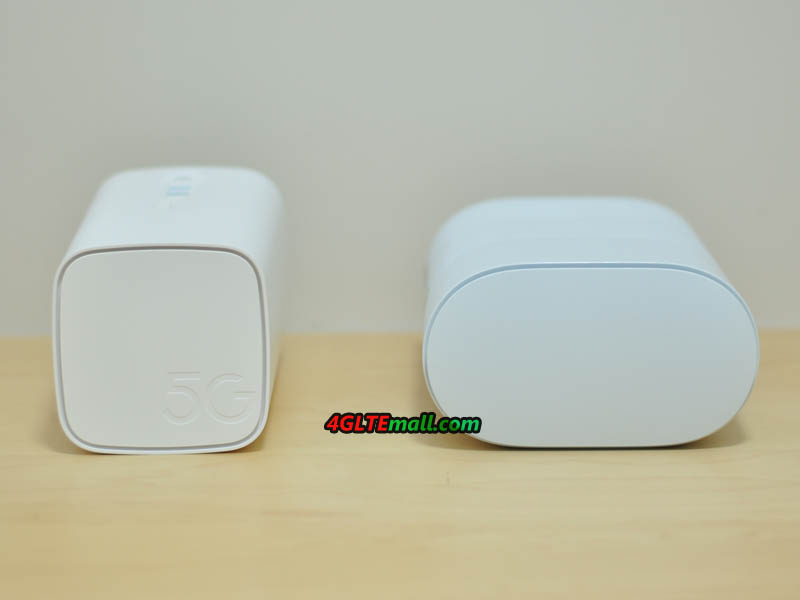
SummaryFrom the table, we can see they have different chipsets which deceide they support different network mode: Huawei 5G CPE Pro support 5G NR dual mode: NSA/SA while ZTE MC801 supports only NSA mode. Huawei 5G CPE Pro has two variant models now, while ZTE MC801 has only one model now. Perhaps there will be more variant models available in near future.Huawei 5G CPE Pro has two connectors like other Huawei 4G WiFi Routers, but ZTE MC801 doesn’t provide the connector for external antenna, which is not good for many users. Per our experience, many of 4G router users may need external antenna to get better signal and faster surfing speeds.They both provide the WiFi 6 and this would be the mainstream for 5G wireless devices. Huawei 5G CPE Pro provide the APP management option by Huawei SmartHome APP, however, ZTE MC801 has no this option. According to our check, ZTE MC801 settings can only be done through a browser. And it provides PC and Mobile settings option, which means, users can do the setup through web browser from a cell phone.The ZTE MC801 price is higher than that of Huawei 5G CPE Pro, perhaps because the Qualcomm chipset is more expensive than Huawei Balong chipset. One thing we have to mention is that the ZTE MC801 is much heavier than Huawei 5G CPE Pro. We suppose this is due to the complex heat radiation system in the router. Regarding the real performance of surfing speeds, we will take future test in near future.

